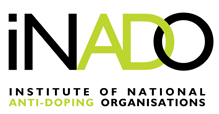Post-cycle therapy for performance and image enhancing drug users : A qualitative investigation / Scott Griffiths, Richard Henshaw, Fiona H. McKay, Matthew Dunn. - (Performance Enhancement & Health 5 (2017) 3 (March); p. 103-107)
- DOI: 10.1016/j.peh.2016.11.002
Abstract:
Anabolic-androgenic steroids (AAS) are synthetic forms of the hormone testosterone and their non-medical use is related to increased muscle size, muscle mass, and strength. A primary concern regarding exogenous AAS use is its potential to suppress endogenous (natural) testosterone production. In response, some users seek out substances to use post-cycle to mitigate problems associated with the resumption of endogenous testosterone production. This study sought to understand issues related to post-cycle therapy (PCT) among a sample of performance and image enhancing drugs (PIED) users in Australia. Semi-structured interviews were conducted with 26 participants (n = 24 male) who reported the use of a range of performance and image enhancing drugs (PIEDs), including AAS, human chorionic gonadotropin, growth hormone, clenbuterol, tamoxifen, insulin, and peptides. Interviews were conducted in person or by telephone, recorded, and transcribed. Data were analysed following a process of thematic analysis. Three themes emerged: (1) access to PCT; (2) maintenance of gains, maintenance of health; and (3) PCT and links to mental health. Steroids were seen as easier to access than PCT; as such, participants tended to continue to use steroids rather than taper down their use, leading to health concerns. Participants wanted access to PCT for several reasons, including minimising any loss of muscle or strength gained through their PIED cycle; because they were concerned that they were no longer naturally producing hormones; or because they were concerned about their mental health, particularly when coming ‘off cycle’, and the need for PCT to help adjust. This study contributes to the existing literature suggesting that PCT may act as a harm reduction measure, allowing PIED users to safely reduce or cease steroid use or to address any negative effects from use, particularly those related to mental health.
